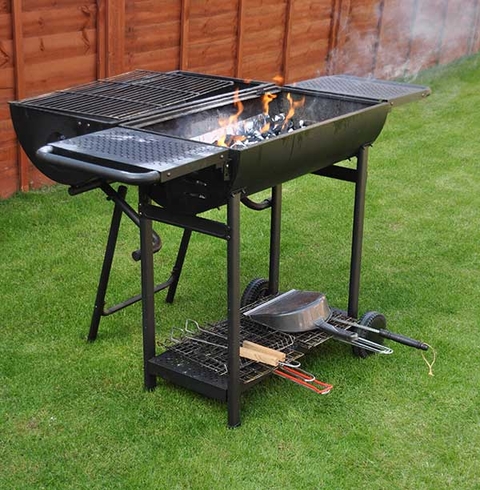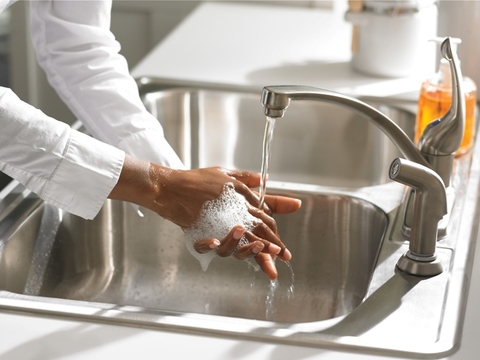During an emergency, cooking and eating habits change to fit the situation. You may not have a refrigerator or a stove and your water supply may be limited. In addition, health risks from contaminated or spoiled food may increase. When preparing food, consider the following:
Cook food to a safe internal temperature
Consider the cooking time and safe internal cooking temperature as measured by a food thermometer. For example, ground beef needs to reach 160℉ for doneness. Poultry should be cooked to 165℉ for doneness. If there is limited fuel for cooking, choose food which cooks quickly, or serve food you don't have to cook.
Prepare only what you need for one meal
Prepare only the amount of food you need for one meal. When left at room temperature for more than two hours, milk, cooked meat, soups, pasta, and vegetables provide excellent conditions for growth of disease causing organisms.
Cooking methods for when the power is out
Fireplace
You can grill food or wrap it in foil and cook it in the fireplace. Fuels for cooking include: wood, tightly rolled newspapers, and logs made of pressed wood particles. Never use charcoal as fuel for indoor fires; the carbon monoxide from the burning charcoal is very dangerous. Be sure the flue is open.
Camp stove - outdoors
Use only outdoors. Propane and butane fires are difficult to extinguish and could easily get out of hand. A dry chemical extinguisher puts out gasoline or oil fires, but not butane or propane fires. There is little you can do to put out a propane or butane fire except shut off the gas. Learn where the shut-off valve is before lighting a camp stove.
Charcoal grill - outdoors
You can use charcoal to cook meats and vegetables in foil and prepare one-pot meals. Do your charcoal cooking outdoors only. Inadequate ventilation makes indoor cooking with charcoal dangerous.
Gas grill - outdoors
Use grills outdoors only and at least 10 feet away from any building.
Fondue pot or chafing dish
You can use these pieces of equipment inside as long as the fuel heating them is approved for indoor use.
No-cook food suggestions
- Peanut butter sandwiches.
- Crackers with canned meats and fish.
- Chips.
- Fresh fruit in the peel.
- Unopened cans of fruit or pudding. Discard extra canned food that has been opened.
- Also, discard leftovers, or place in a cooler with ice for no more than 24 hours.
Cleaning and food safety
Handwashing
Wash hands with soap and warm water for 20 seconds before and after handling food, after using the bathroom, changing diapers or touching pets. If running water is not available, use bottled water and soap to wash hands.
Surfaces and utensils
Wash cutting boards, dishes, knives, and countertops with hot, soapy water after preparing each food item and before you prepare the next food item.
Reviewed in 2021





